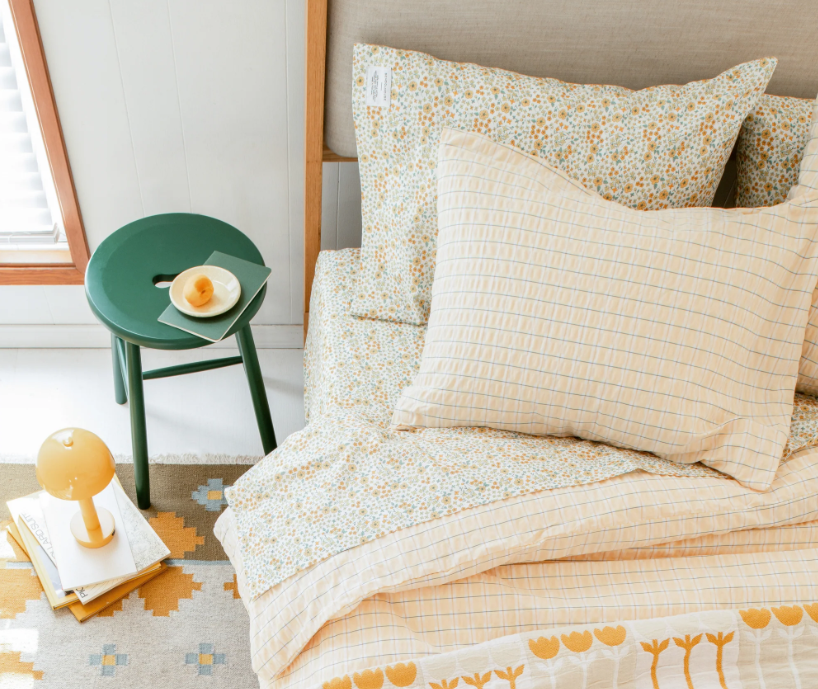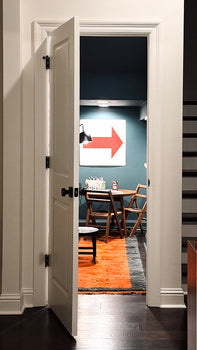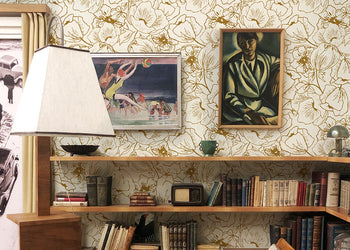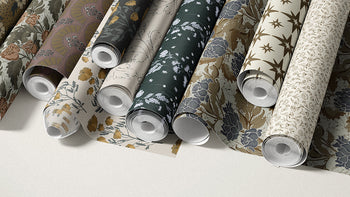

A Guide to Mixing Patterns Like a Professional Designer
We should really take notes from our children more often. During my daughter's "I want to dress myself" phase, she once marched confidently into the world wearing a polka dot dress, floral shoes, and heart-shaped sunnies — all at once. As we headed out for groceries, her spirited pattern mixing made me smile. And honestly? Her combination of prints worked.
Sometimes, the most unexpected pattern pairings are the ones that sing. And the same is true in your home. Whether you're layering wallpaper, textiles, artwork, or decor pieces, mixing patterns in interior design can completely transform your space — without overwhelming it.
Below, I’m sharing my favorite strategies for mixing patterns at home in a way that feels thoughtful, stylish, and totally livable.
01. Pay Attention to Scale
When it comes to combining prints, the most important thing to consider is scale. If you’ve got one focal pattern — let’s say a dense wallpaper design — balance it with larger, more open patterns in your bedding, rugs, or curtains.
For example: a two-tone wallpaper in a tight botanical print pairs beautifully with a wide-striped quilt, a pattern block coverlet, or solid sheets in complementary shades. Mixing patterns that vary in scale always works — it allows the one to lead and the others to compliment without overwhelming the space.



Pro Tip: Use one small-scale, one medium-scale, and one large-scale pattern. Let color be the unifying thread that ties them all together.

02. Pair Florals and Stripes

Florals and stripes are a timeless pairing. And when you add in classic textures like plaid, checks, or herringbone, you introduce a natural pattern mixing rhythm that keeps things interesting without feeling chaotic.
Let’s say you have plaid wallpaper in your office — adding a coordinating floral upholstered chair can soften the space while keeping the visual story cohesive. Just be sure the color palette ties them together: a sage stripe from the plaid echoing the green leaves in the floral will help everything feel intentional.
Mixing patterns by pairing stripes and plaids of varying scales work beautifully in living rooms, reading nooks, or entryways where you want a space to feel layered but not busy.
03. Don't Underestimate Solids & Textures

You don’t need five patterns in a room to create interest. Sometimes, it’s the mix of pattern and texture that brings a space to life. Think about the tactile elements in your home — a tweed ottoman next to a plaid sofa, the linear grout lines in your kitchen tile, or the grain of your wood flooring.
These details create subtle visual patterns that support — rather than compete with — bolder prints like wallpaper or statement art. Use solids with texture (linen, boucle, raw wood) to anchor your space and give the eye a place to rest.
Start with One Room, Then Build Your Pattern Story
Begin by looking at your most-used rooms — the living room, main bedroom, or kitchen.
Ask yourself: What’s the leading role here? Maybe it's your vintage rug, your wallpapered ceiling, or the pattern of your cabinetry. Once you know your centerpiece, layer in supporting textures and prints in pillows, drapery, or even your lighting and hardware.
If your living room leans more subtle in color or pattern, consider going bolder in a nearby powder room , hallway , or mudroom . Pull colors or motifs from your foundational space so each room feels connected, even if the vibe shifts slightly.
Think Beyond Decor Pieces
Your flooring layout, backsplash design, window mullions, and paneling details are all part of your home’s pattern language. If you're renovating or building from scratch, look for opportunities to incorporate pattern through architecture — it builds a richer, more story-driven home.
And if you’re just beginning your pattern journey? Start small. A set of patterned pillows. A framed wallpaper swatch. A bold runner in a hallway. Balancing patterns at home doesn’t have to mean going maximalist — it simply means choosing with intention.
Other Good Reads:





